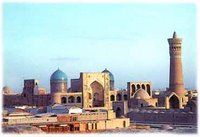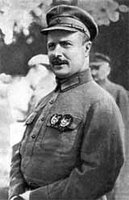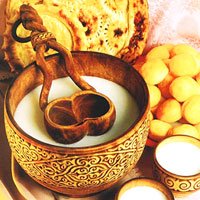I have several advices for you.
1. Know RUSSIAN ;-)
Thanks Martin.
 What else did I know? That Bishkek has a population of approximately 1 million and is a relatively modern city. The ancient glories of the Silk Road and the various civilisations which flourished in Central Asia, or Turkestan as it was sometimes known, did not have much of an impact on this valley. For a taste of the past, Samarkand and Bukhara are next door in Uzbekistan.
What else did I know? That Bishkek has a population of approximately 1 million and is a relatively modern city. The ancient glories of the Silk Road and the various civilisations which flourished in Central Asia, or Turkestan as it was sometimes known, did not have much of an impact on this valley. For a taste of the past, Samarkand and Bukhara are next door in Uzbekistan.Above: Bukhara, not in Kyrgyzstan.
A small clay fort was built in 1825 along one of the caravan routes of the Silk Road through the Tian Shan mountains. There may have been an original settlement here, possibly founded by the Sogdians. The Russians, arriving in 1862, captured and destroyed the fort as part of their annexation of the region. In 1878 the town they founded
 was named Pishpek, and the population increased as Russian peasants came to farm the fertile soil.
was named Pishpek, and the population increased as Russian peasants came to farm the fertile soil.Following the Communist Revolution, the city was renamed Frunze after Mikhail Frunze, who had been born to Romanian peasants in Pishpek and later became one of the leaders of the Revolution, being given control of the Eastern Front by Trotsky and defeating the White Army in Russian Turkestan. Ultimately, Frunze was a victim of Stalin's paranoia: after surviving several suspicious car accidents, he finally died in 1925 during an officially ordered stomach operation.
Above: Mikhail Frunze, born in Kyrgyzstan.
Pishpek retained the name Frunze (the code for the international airport is still FRU), becoming Bishkek in 1991. Designed and built by military planners, the city is laid out on a grid system with a large Russian population which still outnumbers the Kyrgyz.
 There are several legends behind the origin of the name. One is that the old Sogdian name of Peshagakh meant "place below the mountains", which is an apt name given the 4800 metre-high mountains around the city. Another is that the the wooden plunger used to make kumys is named a pishpek in Kazakh, which in Kyrgyz is bishkek. Why a city would be named after this I do not know.
There are several legends behind the origin of the name. One is that the old Sogdian name of Peshagakh meant "place below the mountains", which is an apt name given the 4800 metre-high mountains around the city. Another is that the the wooden plunger used to make kumys is named a pishpek in Kazakh, which in Kyrgyz is bishkek. Why a city would be named after this I do not know.Above: Bishkek and mountains, in Kyrgyzstan.
And what is kumys? It's the national drink, made from fermented mare's milk.
 Given that Kyrgyzstan is a Muslim country, I was surprised to read that the national drink would be an alcoholic one.
Given that Kyrgyzstan is a Muslim country, I was surprised to read that the national drink would be an alcoholic one.Right: kumys, the national drink in Kyrgyzstan.
With all this knowledge, I still didn't know what to expect. A Central Asian capital city with none of the history. A Muslim country with a liking for alcoholic beverages. A Kyrgyz city of which only one third of the population are Kyrgyz. A city in which I was going to live and work for nine weeks, without knowing a word of the language. I didn't even know how to get from the airport to the city.

2 comments:
Hey Ben, it's so quiet on your blog? Everything ok on your side; or just too much kumys? We want updates, also on the bearded females!
Sorry.
I've been working long hours this week, and not had time to get online that much. The internet connection has been quite bad recently, and it's tricky to update the blog. A couple of times I've almost lost everything, and once I managed to post an entry three times without noticing.
I've got a full day tomorrow (07.40 - 22.00), but as my Saturday morning looks empty apart from sleeping, I'll try to add a few more entries then.
Just one question: why are you so interested in bearded females??
Post a Comment